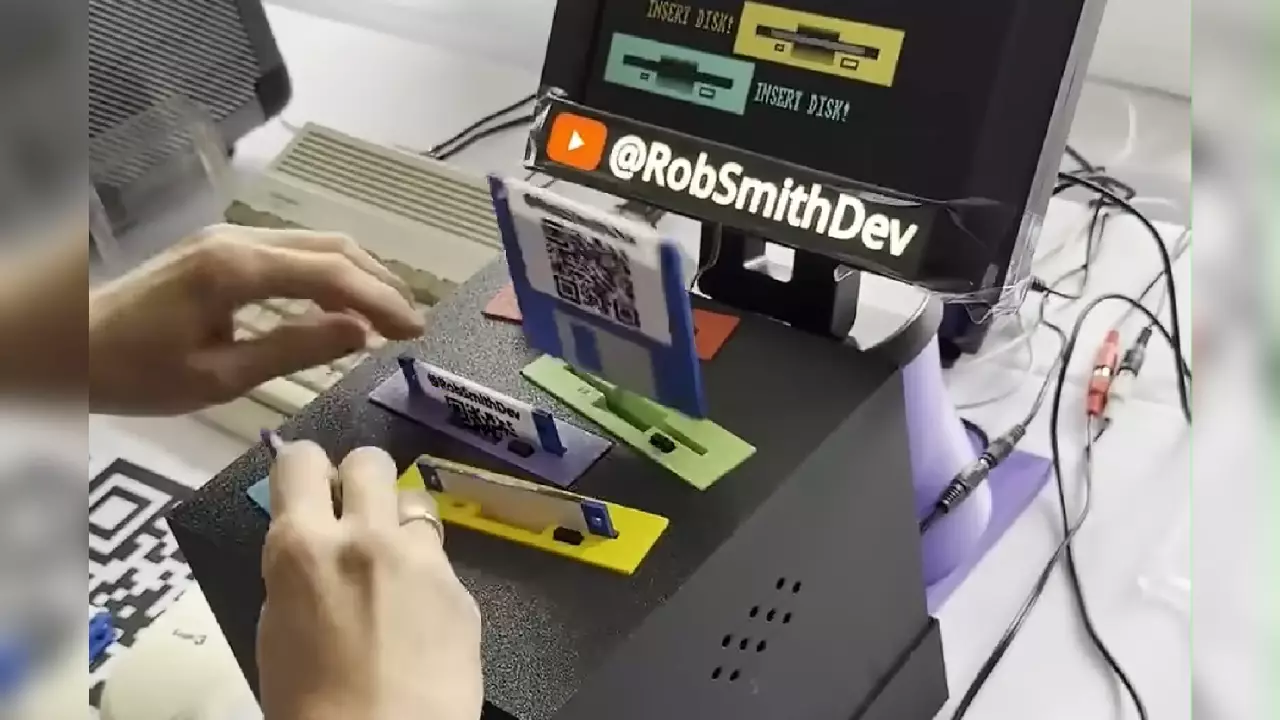In an era dominated by rapid technological advancements, it’s easy to dismiss the relics of the past as outdated and irrelevant. Yet, there’s a profound allure in diving into the nostalgic depths of vintage technologies like floppy disks and classic gaming consoles. Such treasuries of retro engineering aren’t merely sentimental artifacts—they are fertile ground for innovation, creativity, and a deeper understanding of technological evolution. The recent project by Rob Smith Dev epitomizes this trend, transforming a familiar symbol of the digital age—the floppy disk—into an interactive game that celebrates and redefines retro tech’s place in modern culture. This act of reviving an old device not only pays homage to technological history but also demonstrates the endless possibilities when passion meets ingenuity.
Transforming Nostalgia into Interactive Art
Smith’s ingenious creation, DiskFight, exemplifies how combining hardware experimentation with software craftsmanship can produce compelling experiences. By utilizing custom-built linear actuators to manipulate floppy disks, Smith transforms what was once a simple storage medium into an active component of a game. The loading mechanism, designed to simulate a “pop” effect, injects dynamic movement and challenge into the gameplay, making the act of inserting or removing disks an engaging physical task. This blurring of boundaries between hardware and gameplay reveals a powerful truth: nostalgia is an effective gateway for innovation, encouraging creators to reimagine old devices in ways that are both playful and meaningful.
But perhaps most striking is Smith’s philosophical stance—favoring gentle interactions over violent ones. Instead of a “whack-a-mole” approach, DiskFight emphasizes precision and finesse, turning the act of disk insertion into an almost meditative experience. This subtle shift aligns with the broader cultural shift away from violence-heavy gaming, favoring nostalgic, less aggressive forms of entertainment. Such design choices underscore that innovation isn’t solely about novelty; it’s also about responsiveness to current cultural values, showing respect for the history that informs our digital present.
The Artistic and Technical Fusion
Beyond hardware, the artistic dimension plays an equally vital role. Smith’s collaboration with musician Hoffman to produce a custom soundtrack captures the spirit of retro collaboration—melding visual, auditory, and mechanical elements into a cohesive experience. The music, an energetic drum-and-bass track called Disk Menace, crescendos in intensity, mirroring the escalating tension of the game. This synchronization exemplifies how modern reinterpretations of vintage projects can create multi-sensory narratives, elevating simple mechanics into art forms.
From a technical standpoint, the project demonstrates a high level of craftsmanship. Building such a device from scratch involves a blend of engineering skills, from 3D printing and mechanical assembly to programming in AMOS—the classic Amiga language. Smith’s decision to document the process, sped up with music, emphasizes the labor and dedication behind retro-inspired innovation. It’s a reminder that even obsolete technologies demand meticulous effort and creative problem-solving, qualities that are often overlooked in today’s fast-paced tech landscape.
Challenging the Notion of Obsolescence
Projects like DiskFight challenge the misconception that vintage technology is merely nostalgic window dressing. Instead, they position these devices as potent platforms for experimental art, educational tools, and even social commentary. The act of reimagining old hardware in playful, functional ways revitalizes interest in the history of computing, inspiring new generations to explore the roots of their digital world.
More importantly, these endeavors foster a mindset that values craftsmanship, patience, and curiosity. They prompt us to ask: What can we learn from the failed or overlooked ideas of the past? How can old forms of technology still serve groundbreaking purposes in our modern digital ecosystem? In embracing the retro, creators unlock fresh perspectives and challenge the disposable culture that often characterizes contemporary tech trends.
As I reflect critically on this movement, I see not just nostalgic indulgence but a deliberate act of creative resistance—an assertion that innovation should honor its history, not erase it. When developed thoughtfully, even the most obsolete tech can serve as a catalyst for new, meaningful creations. Projects like DiskFight prove that the true power of innovation lies in its ability to blend the old with the new, crafting experiences that are as insightful as they are entertaining.


Leave a Reply